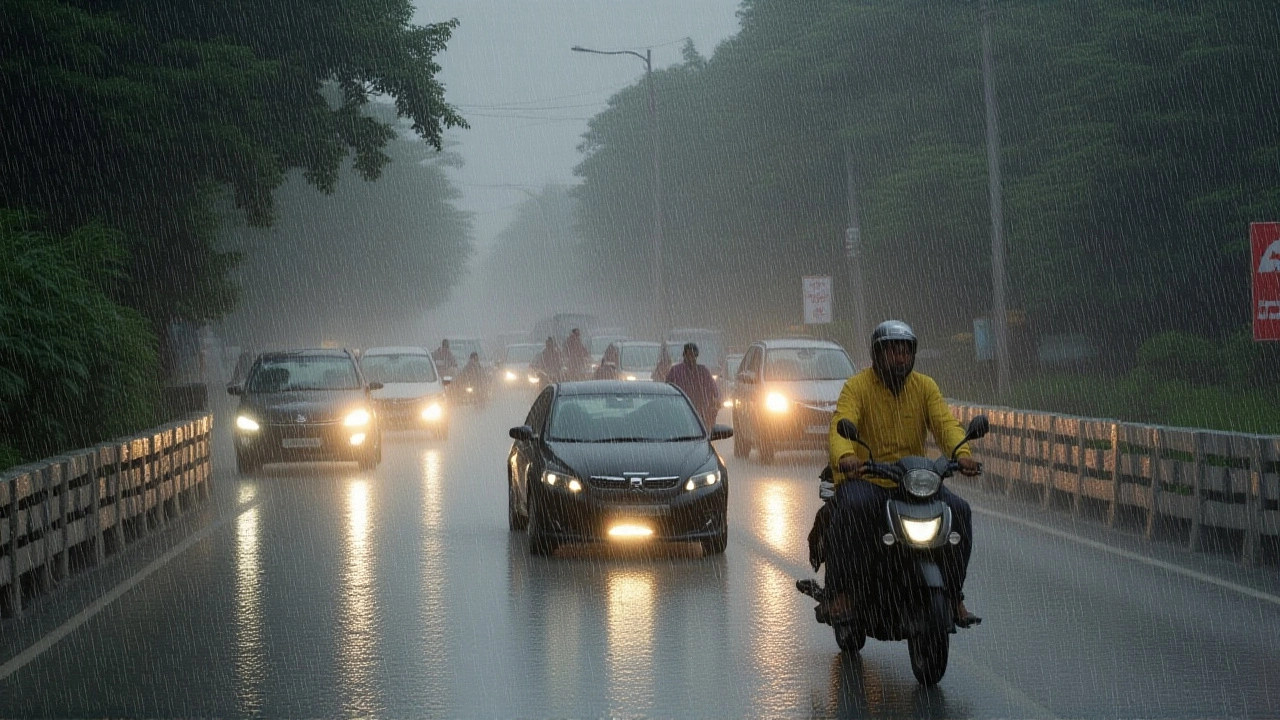Delhi rainfall: what you need to know right now
Rain in Delhi can change plans in minutes. Whether you are commuting, planning a weekend outing, or just watching the sky, knowing the basics helps you stay ahead. Below you’ll find quick facts about how the monsoon hits the city, what the latest forecasts say, and easy steps to stay safe when the downpour gets heavy.
How the monsoon hits Delhi
The monsoon season runs from late June to early September. Warm, moist air from the Bay of Bengal moves north and meets the cooler air over the Himalayas. That clash creates clouds that dump large amounts of rain over the city. In a typical July day, Delhi can receive anywhere from 5 mm to 30 mm of rain. Some years bring extreme events – like the 2020 flood that left streets underwater for days.
Rainfall isn’t even across the city. Areas near the Yamuna River often see more water because the river swells quickly. Low‑lying neighborhoods such as Najafgarh and Bhalswa can flood faster than places on higher ground. That’s why local weather apps usually show a map with color‑coded rain intensity – check it before stepping out.
Staying safe during heavy rain
First, keep an eye on the forecast. Most Indian weather sites update every hour, and many send push notifications for severe weather alerts. If the alert says “heavy rain expected,” plan alternative routes or use public transport that has dedicated lanes.
Second, protect your electronics. A simple zip‑lock bag or a waterproof pouch can save a phone, wallet, or charger from getting soaked. Even a small splash can damage a device, so it’s worth the extra minute.
Third, avoid water‑logged roads. Even a few centimeters of standing water can hide potholes or sudden drops. If you must drive, go slow, keep a safe distance from other vehicles, and turn on low‑beam headlights to improve visibility.
Fourth, be careful around power lines and poles. Strong winds can knock them down, and rain makes the ground slippery. If you see a downed line, stay away and call the local electricity department.
Finally, think about health. Damp weather can worsen asthma or allergies. Keep a mask handy if you’re sensitive to pollen, and carry any inhalers you need.
Rain also brings good things – cooler temperatures, greener parks, and fresh air. If you’re planning a weekend outing, pick a morning slot before the afternoon showers typically start. Carry an umbrella, a light raincoat, and a reusable water bottle – the city’s water supply stays clean even during heavy rain.
Remember, Delhi’s rain patterns are becoming more unpredictable due to climate change. Staying informed and prepared is the best way to enjoy the monsoon without the hassle. Check the latest forecast, pack the right gear, and move smartly through the city. You’ll be ready for whatever the skies throw at you.

1 Oct 2025
India's monsoon retired early in Delhi, sparking record October rains that eased air pollution, while Mumbai and other states brace for continued showers.
Continue reading...
